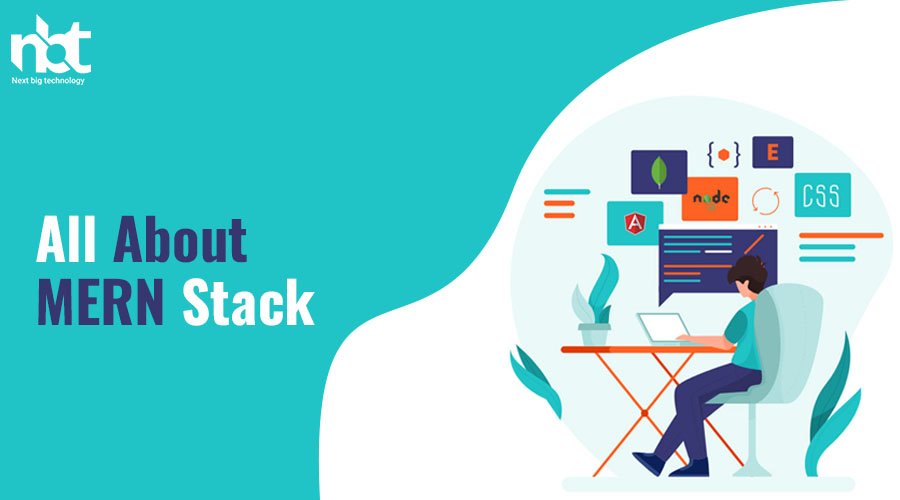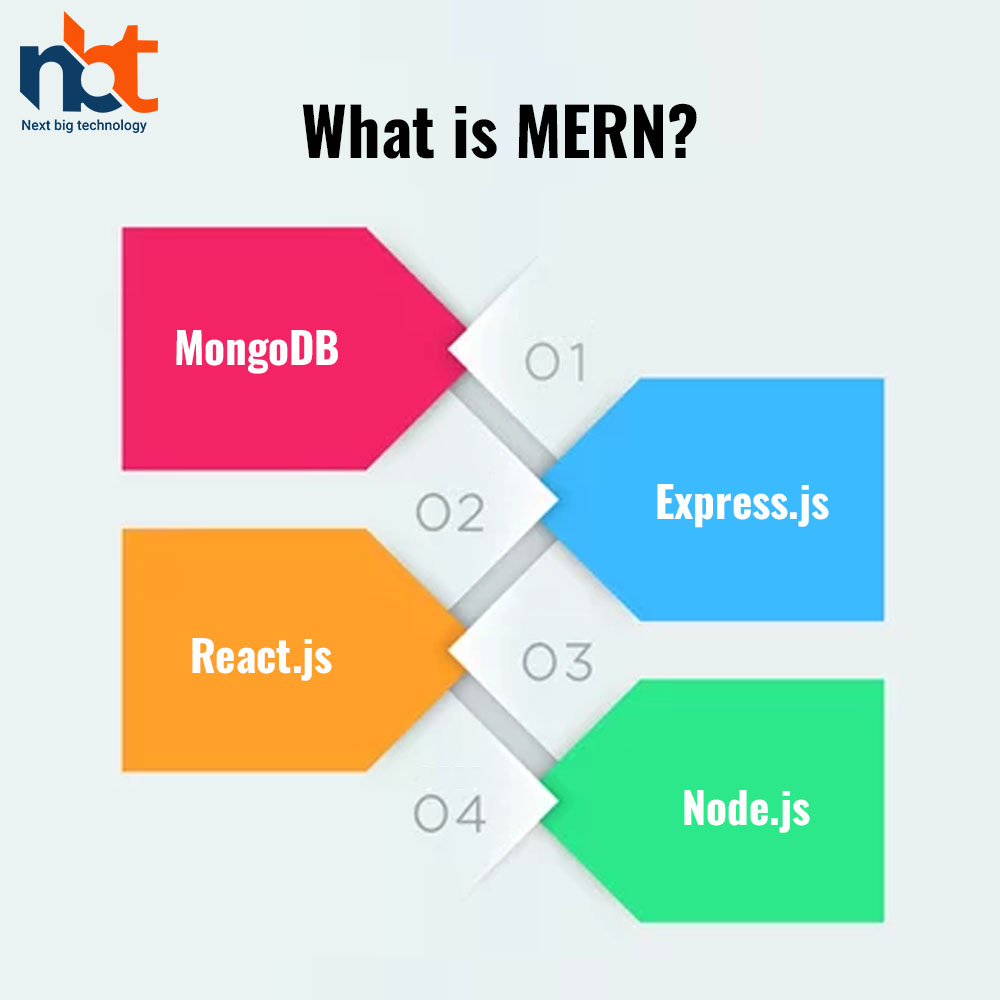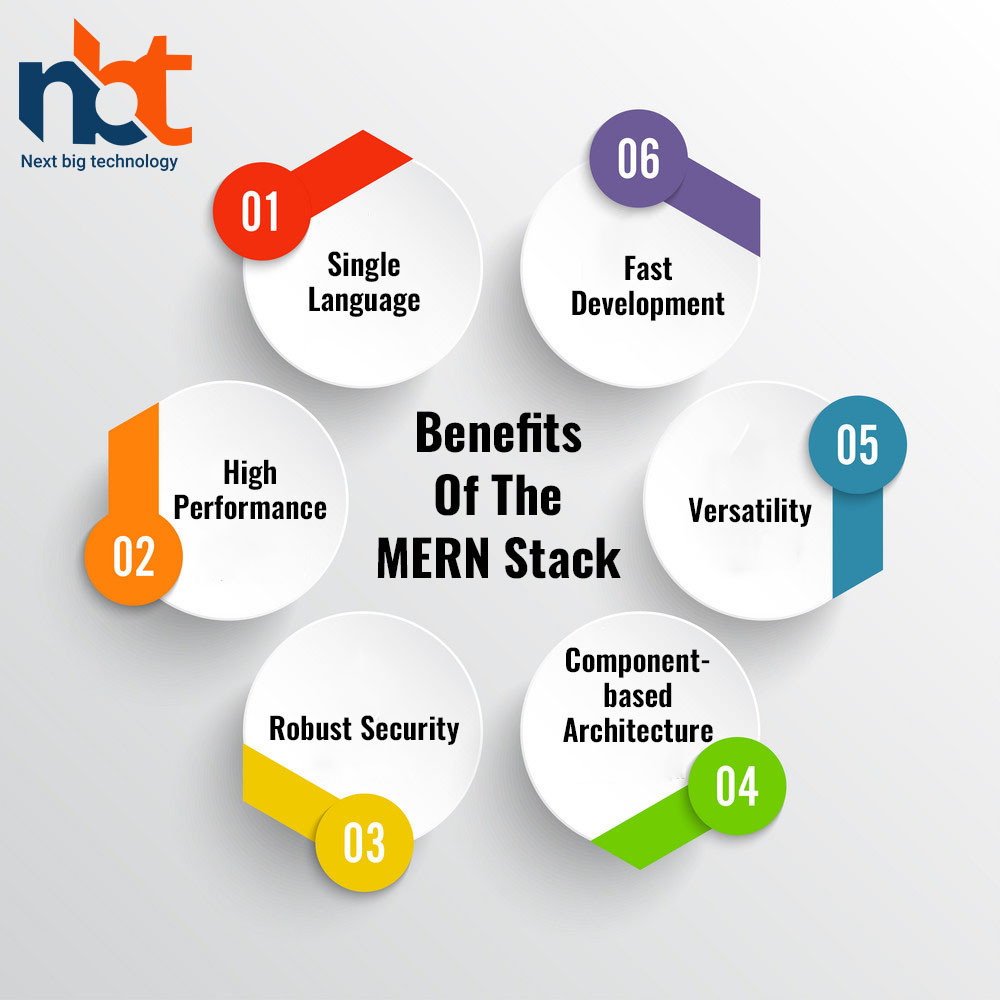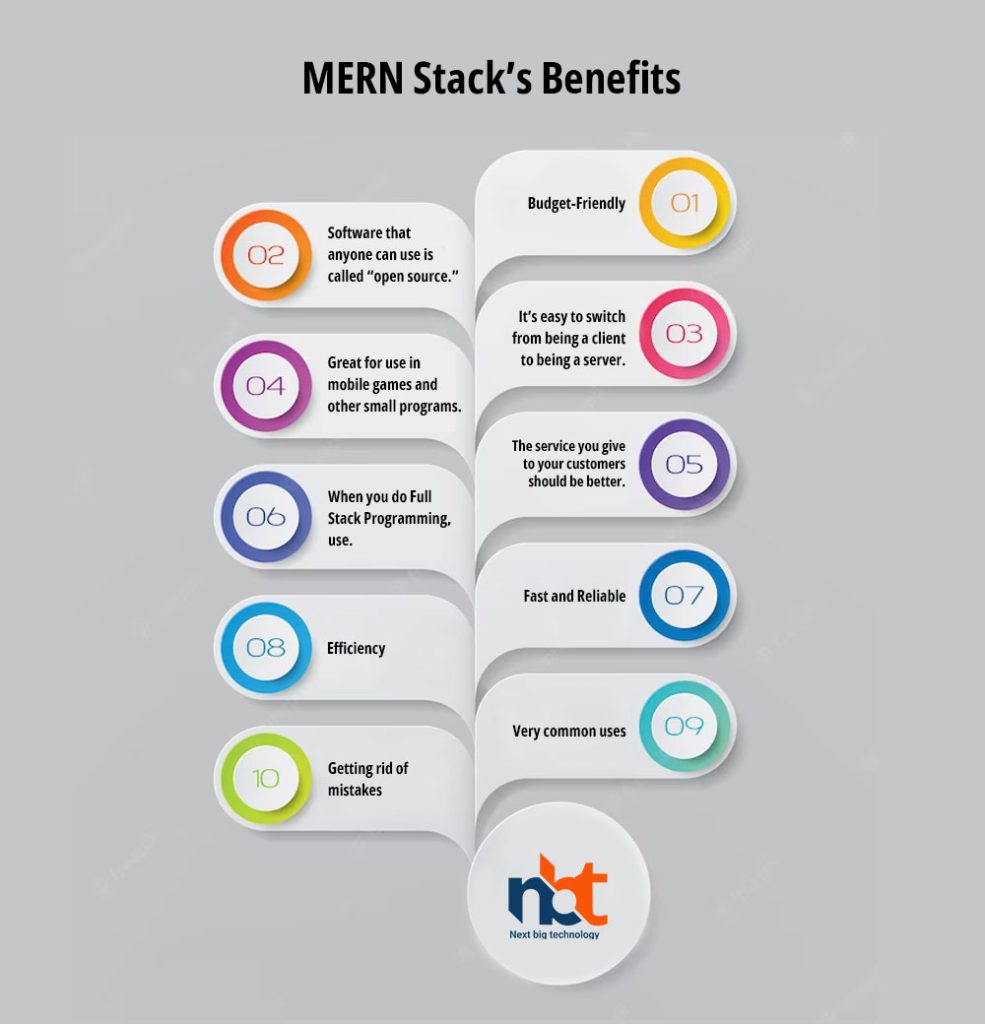As the world becomes more advanced, web development has become a progressively imperative field. One of the foremost well-known web development stacks is MERN, which stands for MongoDB, Express.js, React.js, and Node.js. In this article, we will investigate All About MERN Stack and why it has become so popular within the web development community.
Table of Contents
What is a Stack?
Before we dive into MERN, it’s critical to understand what a stack is within the web development setting. A stack may be a combination of innovations that work together to make a web application. A stack comprises a database, a backend framework, a frontend system, and a runtime environment. Each of these innovations is chosen based on its qualities and how well it works with the other components of the stack.
What is MERN?
MERN is a stack that comprises four primary innovations:
MongoDB, Express.js, React.js, and Node.js. Let’s take a closer see at each of these components.
MongoDB
MongoDB may be a document-oriented NoSQL database that stores data in JSON-like records. It is outlined to be exceedingly versatile and can handle expansive sums of information. MongoDB is also known for its adaptability, permitting designers to adjust information structures effortlessly.
Also Read : Top Advantages of MongoDB
Express.js
Express.js may be a backend web application used for Node.js. . Express.js is known for its ease of use, making it a prevalent choice among developers. It gives a set of instruments and features that make creating web applications and APIs simple.
React.js
React.js could be a JavaScript library for building user interfaces. It permits designers to make reusable UI components and makes it simple to upgrade the client interface based on changes to the application state. React.js is known for its performance and is broadly utilized in advanced web applications.
Also Read : Why you should Learn ReactJS in 2023
Node.js
Node.js may be a JavaScript runtime built on the V8 engine. It permits designers to run JavaScript on the server side, making constructing quick and adaptable web applications conceivable. Node.js is known for its speed and proficiency, making it a popular choice for web engineers.
Also Read : Reasons To Choose NodeJS for Web App Development
Why MERN?
MERN has become a well-known stack among web engineers for a few reasons. To begin with, it gives a complete solution for building web applications. With MongoDB as the database, Express.js as the backend system, React.js as the frontend library, and Node.js as the runtime environment, designers can construct versatile and performant web applications from beginning to wrapping up using only one stack.
Another reason for MERN’s ubiquity is the truth that all of these technologies utilize JavaScript. JavaScript is one of the world’s most broadly utilized programming languages and is commonly utilized for web development. By using JavaScript for both the front and back end, developers can write code that’s easy to study and keep up with.
MERN is also known for its adaptability. Each stack component can be customized based on the application’s particular needs. For illustration, if a designer inclines toward a diverse database than MongoDB, they can effortlessly swap it out for a distinctive one. If a designer bends toward an outstanding frontend library than React.js, they can use a different one effortlessly.
At long last, MERN features an expansive and dynamic community of designers. This implies a bounty of assets accessible for learning and investigating issues. It moreover means that there are numerous third-party libraries and plugins available that can be utilized to amplify the functionality of the stack.
How to get started with MERN?
If you’re curious about learning MERN, a few assets are accessible to assist you in getting started. Here are some :
- Official Documentation: The official documentation for each of the components of the MERN stack could be an excellent put to begin. It gives a detailed overview of the technology and how to utilize it.
- Online Courses: There are numerous online courses accessible that instruct MERN. These courses provide structured educational programs and can be an extraordinary way to learn MERN from scratch. A few well-known online course stages that offer MERN courses incorporate Udemy, Coursera, and edX.
- YouTube Tutorials: Too numerous YouTube tutorials are accessible that cover different viewpoints of the MERN stack. These instructional exercises can be a terrific way to memorize MERN at your own pace and can supplement other learning assets.
- Community Forums: Joining MERN community gatherings can be an extraordinary way to memorize other engineers and offer assistance with any issues you face. Some popular community gatherings for MERN incorporate Stack Flood, Reddit, and the MERN Stack Community Slack.
- Projects: At long last, building projects is one of the finest ways to memorize MERN. Begin with a simple task and work up to more complex ones. Building projects make a difference when you learn MERN and create a portfolio that can be utilized to exhibit your skills to potential bosses.Also Read : MEAN Stack Vs. MERN Stack: A Comparison Between the Two Tech Stacks
Working of MERN Stack:
The MERN stack is a collection of technologies that work together to give a complete solution for building web applications. Let’s take a closer seem at how each component of the MERN stack works together:
-
MongoDB:
MongoDB could be a NoSQL database that stores information in JSON-like documents. It’s an adaptable and versatile database planned to work with large amounts of information. MongoDB is utilized within the MERN stack to store data for web applications.
Also Read : What is MongoDB, and What are the Benefits of MongoDB?
-
Express:
Express may be a web application system for Node.js that provides a set of instruments and highlights for building web applications. Express is utilized within the MERN stack to handle server-side logic and directing.
-
React:
React could be a JavaScript library for building client interfacing. It gives a set of devices and highlights for building energetic and responsive web applications. Respond is utilized in the MERN stack to construct client-side components and client interfacing.
Also Read : How to build fast and SEO-friendly web apps using ReactJs, Redux, and NextJs
-
Node.js:
Node.js is a JavaScript runtime that allows designers to run JavaScript on the server side. It gives tools and highlights for building scalable and efficient web applications. Node.js is utilized in the MERN stack to handle server-side logic and to communicate with the MongoDB database.
Together, these technologies supply a total arrangement for building web applications. Here’s how it works in practice:
- The client sends a request to the server.
- The server gets the ask and sends it to the appropriate Express course.
- The Express course handles the request and communicates with the MongoDB database to recover or adjust information.
- The server returns the reaction to the client, which React renders into the user interface.
- The client interacts with the interface, returning demands to the server and beginning the process.Also Read : Why Choose Node.js For Real-Time Application Development
Uses OF MERN Stack:
MERN is a popular web development stack that comprises four fundamental technologies:
MongoDB, Express, React, and Node.js. Here are a few use cases of the MERN stack:
- Social Media Platforms: MERN stack can be utilized to develop social media platforms like Facebook, Twitter, and Instagram. These platforms require real-time overhauls and high-performance APIs that can handle large amounts of activity.
- E-commerce Platforms: MERN stack can be used to create e-commerce platforms like Amazon, eBay, and Alibaba. These stages require a robust database to store product information and a fast front end for consistent shopping encounters.
- Healthcare Applications: MERN stack can be utilized to develop healthcare applications like telemedicine platforms, health record management systems, and persistent engagement instruments. These applications require an elevated level of security and security, which MongoDB’s robust security features can give.
- Education Platforms: MERN stack can be utilized to create instruction platforms like Coursera, Udemy, and edX. These stages require an adaptable architecture that can handle many clients and courses, and React’s component-based design makes it simple to construct complex UI components.
- On-demand Applications: MERN stack can be used to develop on-demand applications like Uber, Lyft, and Airbnb. These applications require real-time overhauls, location-based services, and a fast backend to handle many demands.
Also Read : USE of MERN Stack Development to develop Web and Mobile Applications
Benefits Of The MERN Stack
MERN stack is a popular web development stack that comprises four primary innovations:
MongoDB, Express, Respond, and Node.js. Here are a few benefits of using the MERN stack for web development:
- Single Language: MERN stack permits developers to utilize a single dialect, JavaScript, for both frontend and backend development. This simplifies the development process and diminishes the complexity of the extension.
- Fast Development: MERN stack permits rapid development as engineers can reuse code, modules, and libraries from the tremendous JavaScript biological system. This spares improvement time and empowers speedier time-to-market for the item.
- Versatility: MERN stack is highly versatile and can handle many concurrent clients and demands. Typically conceivable since of the event-driven, non-blocking I/O model of Node.js and the universal database architecture of MongoDB.
- Component-based Architecture: Respond, the frontend library of the MERN stack, uses a component-based design that makes it easy to build complex UI components. These components can be reused throughout the application, making it more measured and easier to preserve.
- Robust Security: MongoDB, the database of the MERN stack, provides strong security highlights like role-based get-to-control, SSL encryption, and auditing. This ensures that the information is secure and secure from unauthorized access.
- High Performance: MERN stack gives high performance because of the event-driven, non-blocking I/O show of Node.js and the optimized information access patterns of MongoDB. This allows the application to handle a lot of data and requests without slowing down.
Generally, the MERN stack is a powerful innovation stack that gives numerous benefits to web developers. Its single language, quick improvement, versatility, component-based engineering, robust security, and tall execution make it a perfect choice for building complex and scalable web applications.
Additional MERN Stack Benefits
Drawbacks Of The MERN Stack
Whereas the MERN stack offers numerous advantages, designers should be aware of some potential disadvantages. Here are a few of the drawbacks of using the MERN stack:
- Steep Learning Curve: MERN stack requires designers to have a solid understanding of JavaScript and the personal innovations that make up the stack. This may make the learning curve steep, especially for beginners.
- Lack of Standardization: Whereas the MERN stack could be a popular technology stack, there needs to be official standardization. This can lead to disarray and consistency regarding best practices and conventions.
- Limited Support: Whereas the individual innovations that make up the MERN stack have expansive and dynamic communities, the MERN stack itself is relatively new and still developing. This can lead to limited support for specific issues that may arise.
- Security Concerns: While MongoDB, the database of the MERN stack, has robust security highlights, it is still vulnerable to security vulnerabilities on the off chance that not correctly configured. This will pose a security risk if not handled legitimately.
- Execution Issues: While the MERN stack performs well, it can be resource-intensive and require significant optimization to attain the desired performance.
- Complexity: MERN stack includes different advances and can be complex to set up and design. This could lead to improvement and upkeep challenges, particularly for smaller teams.
Conclusion
In conclusion, the MERN stack has become popular among web engineers for its adaptability, adaptability, and ease of utilization. It gives a total arrangement for building web applications utilizing JavaScript, making it easy to study and maintain code. If you’re interested in learning MERN, many assets are accessible to assist you in getting begun, including official documentation, online courses, YouTube tutorials, community forums, and building ventures. With the right resources and devotion, anybody can learn MERN and build web applications using this powerful stack.
Thanks for reading our post “All About MERN Stack 2024“. Please connect with us to know more about MERN Stack Development.





















